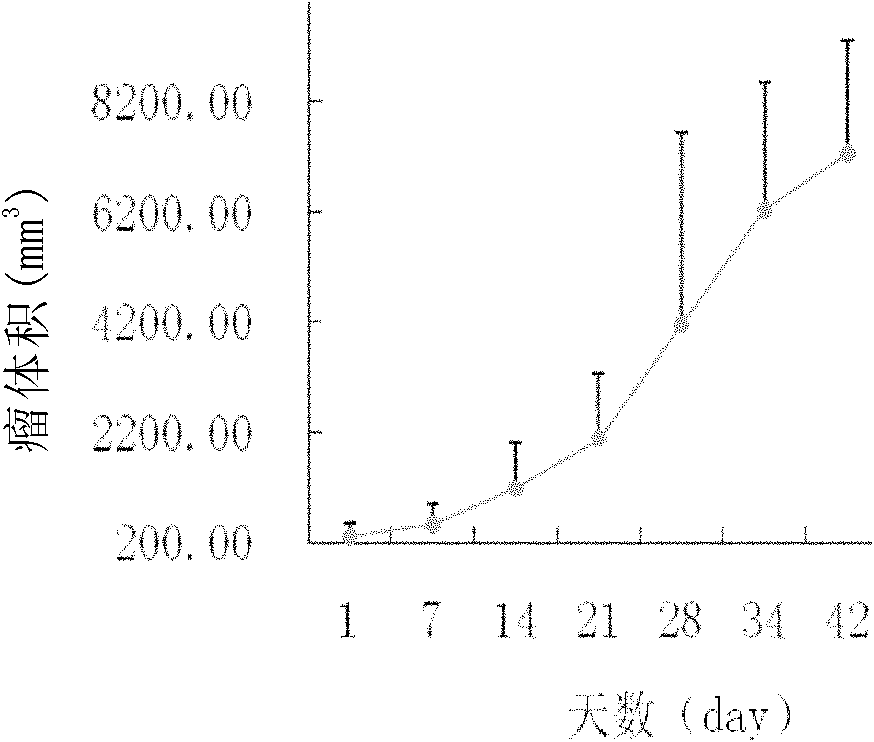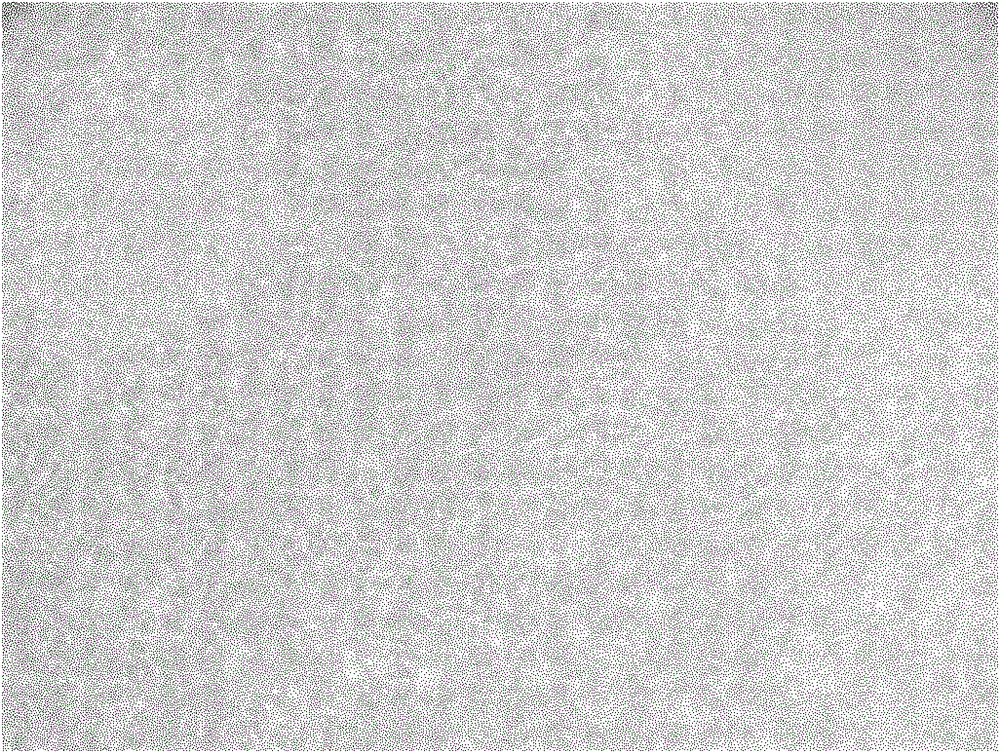Establishment and application of hepatocellular carcinoma cell line HCC-LY5
A technology of HCC-LY5 and liver cancer cells, applied in the field of its establishment, a new hepatocellular carcinoma cell line HCC-LY5, which can solve the problems of non-expression, inconsistent cell line characteristics, and unstable passage
- Summary
- Abstract
- Description
- Claims
- Application Information
AI Technical Summary
Problems solved by technology
Method used
Image
Examples
Embodiment 1
[0074] Establishment of hepatocellular carcinoma cell line HCC-LY5
[0075] (a) Source
[0076] This cell line comes from a male liver cancer patient (patient number: 603320), and its clinical information is shown in the table below.
[0077] Table 1
[0078]
[0079] (b) Method
[0080] Take the primary liver cancer tissue of the liver cancer patient and inoculate it in immunodeficient mice, and take the tumor-forming tissue for repeated inoculation and passage, and finally obtain a stable passage cell line. It includes the following processes:
[0081]
[0082] In addition, in the sixth month, 5 male NOD / SCID mice were surgically incised for the third-generation mice. In the 7th month, bilateral lymph nodes were observed to be enlarged after tumor resection. After dissection, the lungs were transparent. The primary culture was performed. The lymph nodes were taken to pass 4 NOD / SCID mice, and the lungs were taken to pass 4 NOD / SCID mice. mouse. On the 8th month, the tumor was cut a...
Embodiment 2
[0088] Biological characteristics of human liver cancer cell line HCC-LY5
[0089] In this example, the biological characteristics of the purebred human hepatocarcinoma cell line with the deposit number of CCTCC NO: C201099 were detected by conventional methods. The results are as follows:
[0090] 2.1 Cell morphology:
[0091] Under the inverted phase contrast microscope, the HCC-LY5 liver cancer cells are polygonal or circular, uniform in shape, and passaged every 72 hours ( image 3 ).
[0092] 2.2 Enzyme / green fluorescent protein double labeling
[0093] The result of luciferase / GFP double labeling of HCC-LY5 cell line is as follows Figure 4 (Right panel) shows that all cells are labeled with green fluorescent protein (GFP).
[0094] 2.3 HCC-LY5 cell immunocytochemical analysis
[0095] HCC-LY5 liver cancer cells were planted on a cell chip, and the expression of liver cell-related proteins was analyzed by immunocytochemistry. The antibodies used and the dilution are shown in Table...
Embodiment 3
[0131] Establishing an animal model of liver cancer with human liver cancer cell lines
[0132] Take the human hepatocellular carcinoma cell line HCC-LY5 (preservation number: CCTCC C201099) obtained in Example 1, after digestion with the digestive solution (0.25% pancreatin, 0.02% EDTA, pH 7.3), collect and count, and count it as 1×10 6 Or 1×10 7 The number of cells / mouse was subcutaneously inoculated into 20 4-6 weeks old Balb / c nude mice on the right chest wall of the mouse.
[0133] Between 14-60 days after vaccination, all 20 mice developed tumors one after another. The pathological examination was performed in the same way as in Example 2, and it was confirmed that hepatocellular carcinoma was induced in the animal model.
PUM
 Login to View More
Login to View More Abstract
Description
Claims
Application Information
 Login to View More
Login to View More - R&D
- Intellectual Property
- Life Sciences
- Materials
- Tech Scout
- Unparalleled Data Quality
- Higher Quality Content
- 60% Fewer Hallucinations
Browse by: Latest US Patents, China's latest patents, Technical Efficacy Thesaurus, Application Domain, Technology Topic, Popular Technical Reports.
© 2025 PatSnap. All rights reserved.Legal|Privacy policy|Modern Slavery Act Transparency Statement|Sitemap|About US| Contact US: help@patsnap.com



